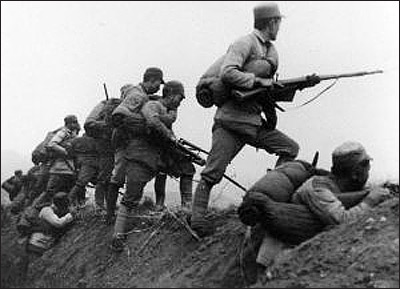Author:
Annotation As it radically alters the arrangement of social forces, the Revolution fosters the emergence of new power paradigms distinct from those dominant in the time of relative calm. In particular, the material infrastructural disintegration is often accompanied by the refutation of the bureaucratic authority (in Weberian sense) and the subsequent replacement thereof with the system of power relations designated by the author as the "politics of proximity."
Text:
Annotation
As it radically alters the arrangement of social forces, the Revolution fosters the
emergence of new power paradigms distinct from those dominant in the time of
relative calm. In particular, the material infrastructural disintegration is often
accompanied by the refutation of the bureaucratic authority (in Weberian sense) and
the subsequent replacement thereof with the system of power relations designated by
the author as the "politics of proximity." In such circumstances, the individual
charisma begins to play an increasingly important role, evolving not only into a
symbol of the "revolutionary immediacy" (as opposed to bureaucratic mediation), but
also into a factor with a power to shape the form of the political modus operandi in
the post-revolutionary period.
Key Terms: Revolution, charismatic authority, bureaucratic authority, Civil War,
personality cult
Charisma and the Politics of Proximity: Case of Nestor Makhno
The collapse of the Russian state could be narrated, analyzed and interpreted from
a whole bevy of perspectives. One approach, no doubt among the dominant ones,
places emphasis on the material aspects of this collapse, that is, on the growing wear
and tear of the sinews that held the Imperial state once together – army, bureaucratic
apparatus, means of communication, etc. The concept of razrukha – a hybrid of ruin
and chaos – employed with a near pathological insistence by the contemporaries of
all political colors in describing the post-Revolutionary reality, adverts to the
concomitant effects of the said „material‟ deterioration. A soldier leaving his position
with a triokhlineika rifle on his shoulder strap; a middle-level district bureaucrat
gaping aghast at the dilapidated and hence desecrated „seat‟ of his former power; an
ammunition factory, no longer animated by the din of continuous work, but rather by
the clamor of workers calling for higher wages and shorter hours, loud at first, then
subsiding and petering out into the terrible still; a letter sent but never delivered; the
profusion of superannuated newspapers, suitable only to proffer the solace of
evanescent warmth; septic wagons of the trains, journeying at the rate that gave full
temporal dimension to the eternity of Russian spatial expanses – all of these tropes
constitute, metonymically if one so wills, the body and spirit of the Russian Civil
War. With the restraining forces once overcome, the entropy tended to increase untill
the Bolsheviks, actively or passively assisted by the populace, temporarily ended a
moratorium on revolutionary experiments and successfully restored the state
apparatus towards whose destruction they had been known to work with an enviable
diligence and animation. The use of the vision, centered on the changes in the infrastructure, raises few
objections. The half-sinusoidal curve of disintegration and restoration marks out the
framework within which a plethora of phenomena appear intellectually tangible; to
wit, one feels oneself adequately equipped when venturing to explain why it had been
easier to obtain monopolistic control over the remaining instruments of power in
some peripheral regions of the fallen empire than in others, and thus to shield
incipient national projects against the encroachments of the Bolshevik-controlled
center. On the level of ideology, the fragmentation of what once had been a uniform
informational field into an archipelago of isolated isles, impervious to the news from
without and highly resistant to the pressures from within – that development stands in
an intimate and direct rapport with the outpouring of fantasies and rumors, tingeing
the notion of Bolshevism with the hues of local preferences. Such diverse political
revelations as the peasant republic in Ukraine‟s Medvyn, the brutal comic opera of
Baron von Ungern‟s neo-Genghisid empire, the Cossack Don and Kuban autonomies
and Polish expansionist ambitions are brought closer, if not through a community of a
cause, but through a commonwealth of a narrative sentiment.




